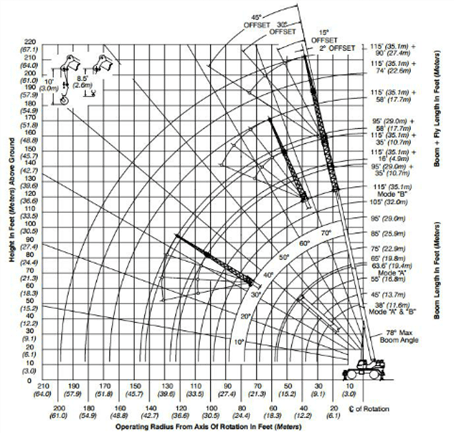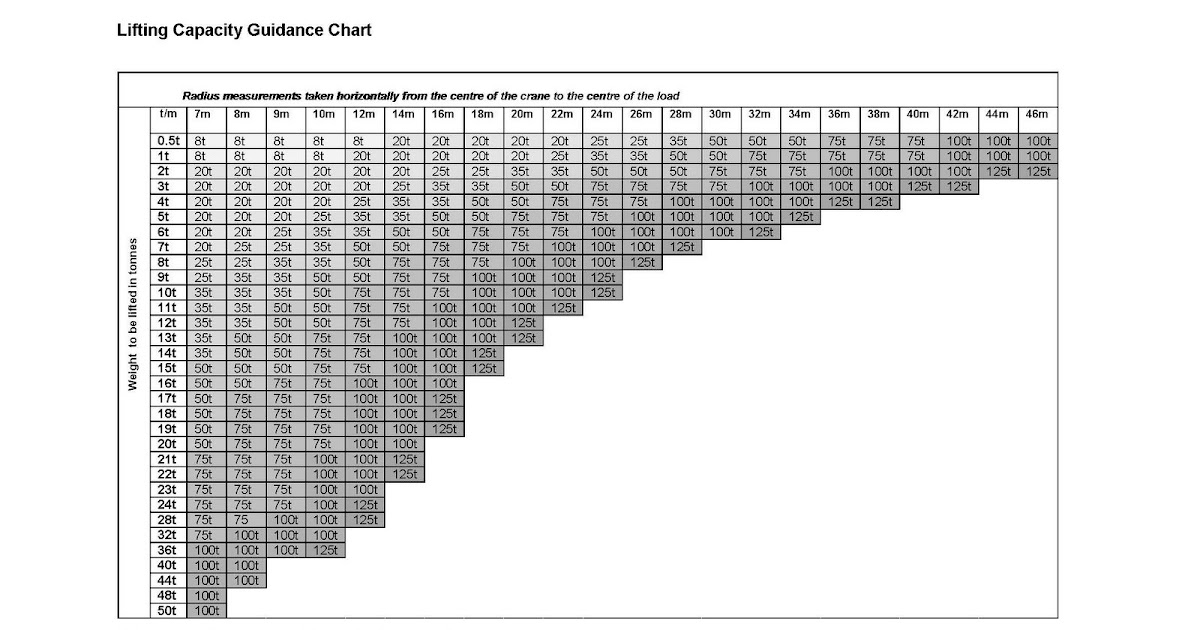


In this case, it shows a 20-degree inner to outer boom angle, reflective of proper load moment rating of the crane.

The load chart also shows the “manual boom extensions” shipped with the crane in white at the bottom.Showing that in order to lift the maximum with this particular crane, the operator will be required to physically move the load hook to its innermost position or hook support to be able to pick this weight.As with most cranes that use a winch, they will provide a much more vertical (straight up and down) than most knuckle boom cranes will. This is especially important when lifting above 15′, as it shows the “curved” load of the crane during the lift. X and Y axis, show not only distance from the crane, but vertical height as well.This 2-dimensional load chart has much more information for the operator to view such as: IF the crane is not equipped with these, the load chart should be changed to reflect this, but they are NOT hydraulic extensions When you look closer at the chart, the last two extensions of the crane (shown in white filler), are in fact manual extensions only or manual pull outs.

When you look at the first initial pick on the left side, it really shows the true capacity at 18,932 pounds (makes it a 9 Ton Crane).Shows the capacity of the crane in both metric and imperial capacities.Crane model – 210.5 or 21.5 Meter/tonne rated crane NOT a 21-Ton crane.The one dimension load chart above shows the following information: Because we specialize in light duty knuckle crane training, the information applies directly to that type of crane. So ill go into greater detail, but still in short form here so that that there is greater clarity. However I did not go into great detail on how to read knuckle boom crane load charts, I simply went over the “other” information that they provided. I recently posted a brief summary on how to read load charts on Linkedin.


 0 kommentar(er)
0 kommentar(er)
